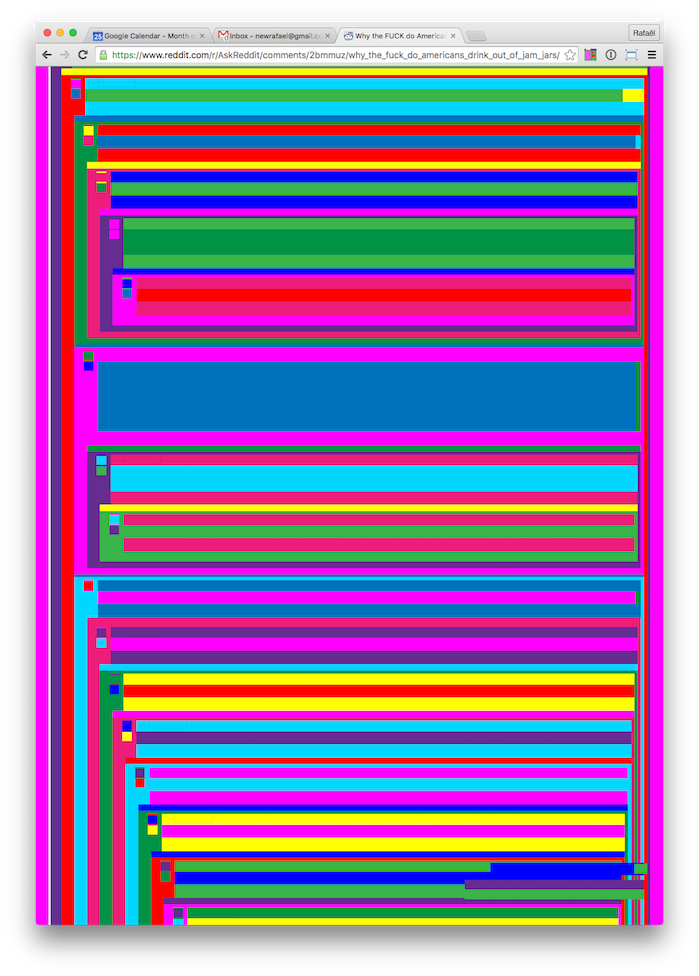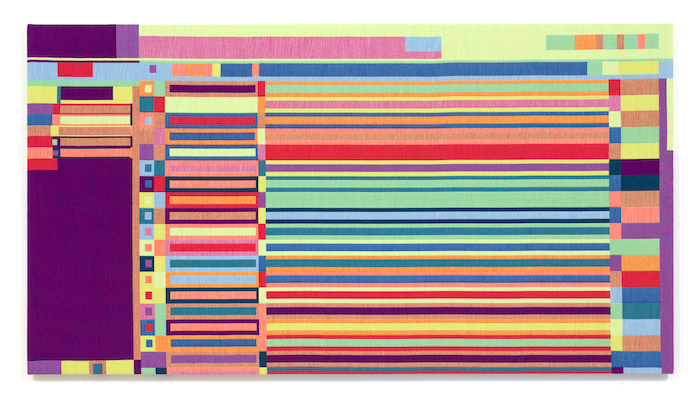Notes on Abstract Browsing

Abstract Browsing is a project that consists of both software and physical objects.
The browser plugin is a free software that anyone can install.
When you turn it on, you can surf the web but all web content is reduced to colored rectangles. It shows you the skeleton of the web. It’s like seeing an X-ray of a building, showing the structural elements.
Web pages are built of many smaller elements, information is organized and categorized. Text, images, tables, things we use every day but are not aware of.
I’m interested how our eyes move across the screen, how websites adapt, learn from your behavior, and change over time. Optimized to grab your attention, to never get boring, to tempt you to click and click and never leave.
Websites are constantly maximizing their efficiency, separate from aesthetic concerns. Websites learn from users by trial and error.
Technology asks new questions about composition. I’m looking for unusual compositions. Anti-compositions, unhuman compositions, compositions that humans would not have created on their own.

I surf the web every day using the plugin. Whenever I find a composition that strikes me, I take a screenshot. Just like digital photography, I take way too many images, thousands and thousands. The real challenge is editing. Making tapestries out of these compositions forces me to choose. Out of all the files I have, I have to choose which ones become objects.
The physicalization (weaving) brings focus. The software is fast and fluid, textile is expensive and slow. It slows me down, it helps me to pause and reflect.
I’ve tried to spend less time on the computer
turning procrastination into productivity
finding beauty in utility
abstraction => removal of information
from natural perception to material reduction
distraction based compositions
infinite information – infinite compositions
the aesthetics of distraction
abstraction is an escape
appropriated abstraction
weaving => mechanical painting
From Wikipedia
“The Jacquard head used replaceable punched cards to control a sequence of operations. It is considered an important step in the history of computing hardware. The ability to change the pattern of the loom’s weave by simply changing cards was an important conceptual precursor to the development of computer programming and data entry.
Charles Babbage knew of Jacquard looms and planned to use cards to store programs in his Analytical engine. In the late 19th century, Herman Hollerith took the idea of using punched cards to store information a step further when he created a punched card tabulating machine which he used to input data for the 1890 U.S. Census.”
